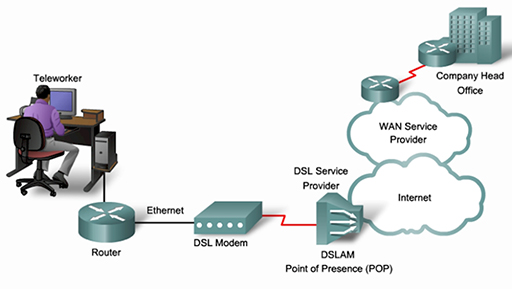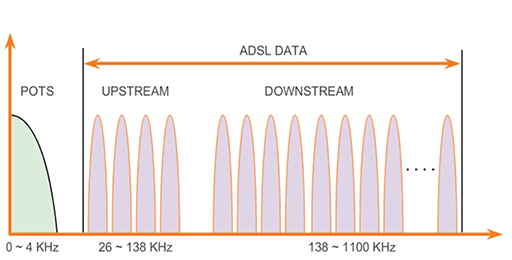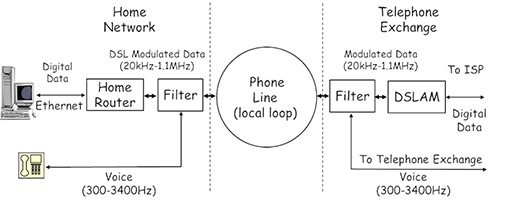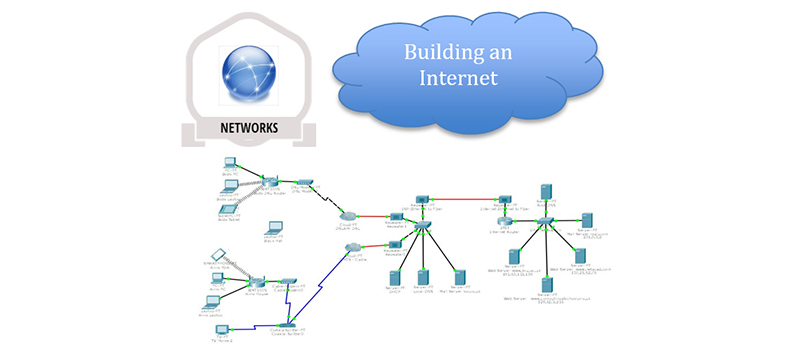2 Digital Subscriber Line
- DSL technology is an always-on connection technology that uses existing twisted-pair telephone lines to transport high bandwidth data and provide IP services to subscribers.
- Multiple DSL subscriber lines are multiplexed into a single, high-capacity link using a DSL access multiplexer (DSLAM) which is installed in the local telephone exchange by the service provider. The digital multiplexed output can then be transported through the service provider’s network by whichever WAN technology they have chosen to implement.

- The diagram above shows a home office worker connecting to their ISP using DSL. This provides them with a connection to the Internet and to the business WAN of their employer.
- DSL provides high-speed connections over the copper wires installed for the domestic public switched telephone network (PSTN) or ‘plain old telephone service’ (POTS). The existing phone system only uses frequencies between 0 and 4 KHz, but DSL can use the additional bandwidth available between 4 KHz and 1 MHz for high-speed data services.
- DSL divides the 4 KHz to 1 MHz bandwidth into different transmit (upstream) and receive (downstream) channels, which it uses to connect the home to the ISP. The diagram below shows a DSL system with more downstream channels than upstream channels, meaning that it can support higher download than upload speeds. This is referred to as asynchronous DSL (ADSL), and is ideal for home users connecting to the Internet, as the majority download rather than upload content.

- Another form of DSL provides equal upload and download speeds, and is referred to as symmetric DSL (SDSL). SDSL is popular with businesses which chose to create WAN connections between their sites using the Internet as opposed to more traditional WAN solutions.
- There are many varieties of DSL, including some that support data rates exceeding 100 Mbps. Regardless of the variety used, the data rates are dependent on the actual length of the physical cabling between the user and the local telephone exchange. For satisfactory ADSL service, the cabling must be less than 5.5 km.
- ISPs provide home users with a router capable of connecting to a telephone system line socket. The home router will use an internal modem to create the required upstream and downstream channels, allowing its WAN port to communicate with the DSLAM at the local telephone exchange over the phone line (local loop):

- There is a gap called a guard band between the telephone voice signal and the modulated DSL signal, which is intended to prevent interference. However, most DSL connections still utilise a filter, connected into the telephone socket, to prevent the DSL signal being picked up by the telephone.
- A filter is also used at the exchange to separate the telephone signal, which is fed to the telephone exchange, and the DSL signal, which is sent to the DSLAM and then towards the ISP WAN for connection to the Internet.
- In the UK, all ISPs must be able to install their DSLAM equipment within a local exchange, allowing them to offer their services to domestic customers connected via the copper cabling installed and owned by BT/Openreach.
1 Introduction to Wide Area Networks
